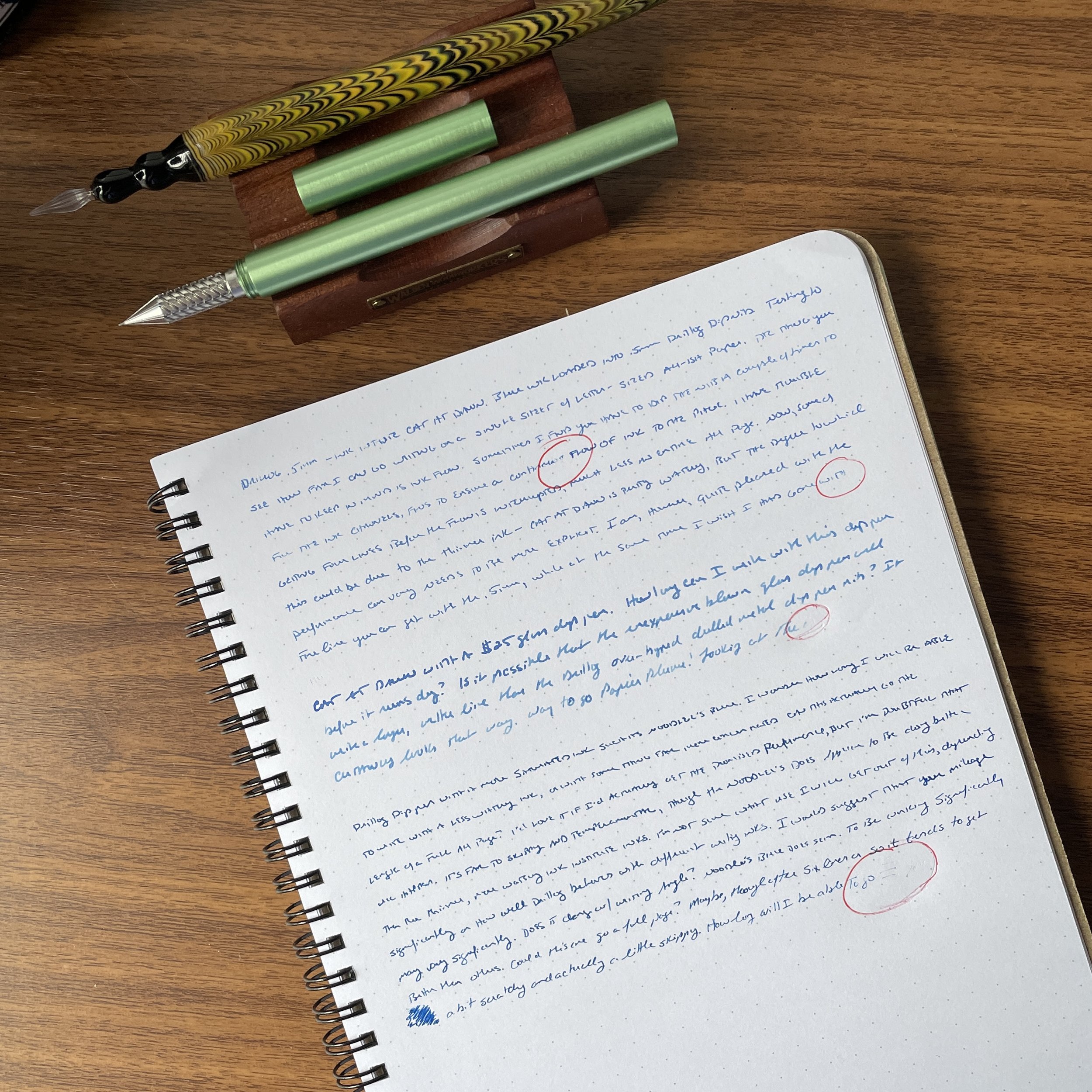It’s always exciting to see U.K.-based Wingback release a new pen! They’re one of my favorite penmakers working with heavier materials like brass and stainless steel, since they pay close attention to the design and balance, with a focus on building pens that are both durable and capable of being used as an everyday writer. Specifically, Wingback pens and mechanical pencils tend to be shorter in order to offset the increased weight of the metals they use. You might think that this is an obvious point, but you’d be surprised at the number of machined pens on the market that end up too heavy to use for more than a few lines of writing at a time.
Introducing the Wingback “Journeyman”!
While Wingback’s latest release, the “Journeyman”, is a touch longer than the existing “Mechanical Pen”, it maintains an excellent feel in the hand and should be on your list of pens to consider if you’re looking for a durable go-anywhere pocket writer. Even better, this new model has customization options previously unavailable.
The new crown/knock incorporates a milled clip.
For those unfamiliar with the Wingback Mechanical Pen, it features a unique “twist bolt action” mechanism that locks down and, with some practice, can be operated one-handed. The Journeyman uses this same style of knock, but incorporates a milled clip into the crown that allows the pen to be secured to a bag, pen case, or pocket. Personally, I also find that the clip makes the mechanism easier to grip and deploy. Wingback has retained other favorite design elements such as the diamond knurling on the grip (neither too sharp nor too slick - just right!) and a comfortable barrel diameter that once again emphasizes the pen’s usability.
The Wingback Journeyman (right) is only slightly longer than the Mechanical Pen (right). The Journeyman is shown in a combination of brass and stainless steel, while the Mechanical Pen is shown in Black Steel.
So what differentiates the Journeyman from prior Wingback offerings, in addition to the clip?
Customization. The Journeyman can be customized on a component level, allowing you to mix and match materials. Available in brass, stainless steel, and Black Steel, you can now choose different combinations of metals for the barrel, crown, and clip. The pen I was sent for review features a brass barrel, with a stainless steel crown and clip. A full titanium pen is also available, though you cannot mix and match the titanium components with other materials.
Refill Compatibility. The Wingback Mechanical Pen used a Fisher Space Pen pressurized refill, which is somewhat polarizing as many people don’t enjoy the way that it feels on the page. (I like it, but it’s not for everyone.) The Journeyman offers more flexibility, as it takes an international G2/Parker-style refill. While it ships with a Schmidt Easyflow 9000, you can choose from any number of ballpoint, gel, or even rollerball options in this format.
The mechanism isn’t complex: simply unscrew the knock and drop in a new refill.
Are there any drawbacks to the Journeyman’s design over the clipless Wingback models? In addition to a bit of added weight from the clip and increased length, I should mention that the edges of the milled clip are somewhat sharp, and can snag your hand if the pen rotates while you’re writing. If you don’t tend to rotate your pen, this may not be an issue, but I’ll also add that my pen is a review sample so the finished product may differ as production specs are finalized.
Takeaways and Where To Buy
As with the other Wingback products I have reviewed, I found the quality to be top notch, and fans of machined mechanical pencils and pens will want to check out the Kickstarter page for full details. With two weeks to go at the time of writing, the Journeyman already has received nearly $100,000 in pledges (blowing past its funding goal of $2000), and Wingback has a track record on Kickstarter, so while Kickstarter projects are never guaranteed, there’s no doubt in my mind that the project will deliver. Current estimates have the Journeyman pens arriving in March 2025. Pledges start at £150 (roughly $195), making it a not-inexpensive purchase, but Wingback has always been known for not skimping on the quality of materials or construction.
Clockwise from left: Wingback Journeyman, Wingback Mechanical Pen, and Wingback Mechanical Pencil. Check out the patina on the pencil, that’s developed over a couple of years.
If you’d like to read further on other Wingback pens and pencils, you can check out my reviews of the Wingback Mechanical Pencil and Fountain Pen and Mechanical Pen here. Pocket pens are one of my core areas of interest, and I periodically update the site’s “Guide to Top Pocket Pens”, which I also encourage you to visit.
Wingback provided me with the pencil featured in this review free of charge, for review purposes. I was not otherwise compensated for this review. The Gentleman Stationer is supported by purchases through our own T.G.S. Curated Shop, and pledges via the T.G.S. Patreon Program.






